Funding and implementation of climate change adaptation measures in high mountain indigenous communities through the Fund for the Tungurahua Paramos Management and the Fight Against Poverty, Ecuador

Summary
The Fund for the Tungurahua Paramos Management and the Fight Against Poverty ( FPLPT) is a public-private initiative and of indigenous grassroots organizations, which was launched in response to the need to halt the deterioration of paramo ecosystems and remnants of Andean forests resulting from the lack of policies, governance and sustainable management of the natural resources of these ecosystems, especially water and biodiversity.
The Fund was created in 2008 as an initiative of indigenous groups in Tungurahua, who through the Water Parliament and the Paramos stakeholder group, proposed the creation of two mechanisms for the sustainable management of paramos and forests at the provincial level: a planning mechanism based on Páramos Management Plans (PMPs) with an indigenous-peasant vision, and a mechanism for the permanent financing of these plans by means of a Fund. Therefore, different provincial stakeholders with competencies and interest in guaranteeing long-term water supply for rural, and especially urban populations, created the commercial trust fund known as FPLPT, whose capital and direct investment yields finance the PMPs through programs and projects.
This mechanism has managed to implement a variety of initiatives for the conservation and protection of water sources, paramos and forests in order to achieve their sustainable management and use, focused on guaranteeing water supply in quantity and quality. One of the most effective strategies to guarantee the conservation of mountain ecosystems and their water production and supply capacity is to eliminate, as far as possible, the unsustainable practices that have been in place. The Fund has managed to reduce the use of these practices through the financing of productive initiatives that generate added value, environmental education, creation and strengthening of community enterprises and associative marketing, and the provision of infrastructure and inputs that improve the life quality of local populations interacting with the paramo, either as owners or users, thereby strengthening the climate change adaptation (CCA) of rural and urban populations in the Fund’s target territory.
(Por favor consulte el documento adjunto para la versión en ESPAÑOL)
Overview
- Location:
- Implementation sites:
- Single country
- Single location
- Mountain region:
- Northern Andes
- Province:
- Tungurahua province
- Site locations:
Ambato, Pelileo and Tisaleo
- Solution scale:
- Ecosystem type(s):
- Solution type(s):
- Sector(s):
- Climate impact(s) addressed:
- Impact time-scales:
- Co-benefits:
- Implementation timeline:
- 2008
- Sendai targets:
Solution details
Main beneficiaries & outcomes
Direct beneficiaries: 15,000 families that have received financing for production and conservation projects through the respective management plans.
Indirect beneficiaries: Approximately 600,000 residents in the cities of Ambato, Pelileo, and Tisaleo who depend on the water produced in the paramos managed by the indigenous communities, with financing from the Fund.
Indigenous and peasant organizations, as constituent entities of the Fund, actively participate in decision-making, design, planning, implementation and evaluation of the different activities included in the PMPs and the respective socioeconomic-environmental projects of CCA. In addition, women’s groups have had increased involvement and participation in the decision-making, design, implementation, monitoring and evaluation processes of the PMPs promoted by the Fund. Thus, although women are not yet a majority, since men are not completely disengaged, each of the Fund’s PMPs has a team of technicians and promoters, made up of 54 members, of which 33 are men and 21 are women. This is a great step forward in achieving gender representation and equality.
Planning and implementation
Local organizations: Movimiento Indígena de Tungurahua (MIT-FENOCIN), Movimiento de los Pueblos Kichwas y Campesinos de Tungurahua (MIT-CONAIE), and Asociación de Indígenas Evangélicos de Tungurahua (AIET), represent organizations of the different indigenous movements from the province as constituent members of the Fund and guarantee the participation and development vision of the indigenous communities.
Public institutions and local governments: The Honorable Provincial Government of Tungurahua (HGPT) together with the hydroelectric companies HIDROAGOYAN S.A. and HIDROPASTAZA S.A. (now known as CELEC E.P. Unidad de Negocio Hidroagoyán), the Municipal Water and Sewage Company of Ambato (EMAPA-A) and the Ambato Regional Centro Norte Electric Company (EEASA), are constituent members and financiers of the Fund. The HGPT also co-finances different projects as part of its functions in conjunction with the Fund.
Private institutions and NGOs: Association for Rural Cooperation in Africa and Latin America (ACRA), co-financing partner providing technical assistance, implementing and financing projects in the areas of organizational strengthening, citizen participation and the care of paramo ecosystems; Consorcio para el Desarrollo Sostenible de la Ecorregión Andina (CONDESAN), co-financing partner in charge of research, technical assistance, design and implementation of the PMPs of the Commonwealth of Decentralized Autonomous Municipal Governments of the South Western Front, and the grassroots organizations Corporación de Organizaciones Campesinas de Pilaguín (COCAP) and Corporación de Organizaciones Populares y Campesinas Cristóbal Pajuña (COCP); Central Ecuatoriana de Servicios Agrícolas (CESA), partner supporting the Fund in the implementation of the PMPs in Pasa and Kisapincha since 2009; European Union, partner for co-financing, technical assistance and research activities that has financed the monitoring of land use change in the period 2001-2019; Pastaza Foundation, partner for the implementation of the San Fernando Paramo Management Plan, in addition to management and conservation projects of the Federation of Communes of Canton Patate (FECOPA) and in San José de Poaló since 2013, as well as projects in the parishes of El Triunfo and Baquerizo Moreno since 2015; Instituto De Ecología Y Desarrollo De Las Comunidades Andinas (IEDECA), partner and part of the technical team for projects and activities designed to improve the living conditions of small agricultural and indigenous producers, which are channeled through COCAP and COCP; Fundación Minga para la Acción Rural y la Cooperación (MARCO), executing partner in the projects of the PMPs, in coordination with other local and sectoral actors; Fundación Manos Abiertas a la protección de los niños y la Conservación del medio Ambiente (FMA), partner that has implemented the FUTURAHUA Environmental Education program, which has been developed since 2012 with groups of children in the nine cantons of the province, specifically those located in the areas of influence of the PMPs promoted by the Unidad de los Movimientos Indígenas; and The Nature Conservancy (TNC), as a partner co-financing, providing technical assistance and promoting research on the conservation and restoration of paramos, especially in the water sources of the Tamboloma community, also offering direct financial support to the Fund and supporting its participation in various national and international exchange events. In addition, the National Financial Corporation is the fiduciary entity, legally representing the Trust, and managing the financial resources under the guidelines of the Fund’s Technical Secretariat.
Finance
The Fund’s financing mechanism consists of annual contributions from constituent members and other participants, known as ordinary contributions. Of these ordinary contributions, 60% are allocated to the capitalization of the Fund and constitute a growing capital. This in turn is invested in order to generate profits that will be used to finance the Fund’s Management Plan, including its operating expenses and the programs and projects included in the plans. The remaining 40% of the annual contributions is a sinking fund, which together with the annual investment yields of the growing capital and the special contributions of other partners, are used to finance the implementation of PMPs’ programs and projects focused on conservation and the fight against poverty.
The Growth Fund (funded by 60% of contributions and focused on making a profit) was valued at over USD 4.1 million as of 2019, while the sinking fund, invested in conservation and poverty reduction initiatives, was valued at around USD 2.7 million.
Since 2008, the Fund has mobilized nearly US$5.5 million in the conservation of paramos and in securing water supply for the Ambato and Pastaza river basins.
Innovation
Innovative public-private fund and grassroots indigenous organizations, with annual capitalization and growth through a commercial trust fund, which allows obtaining permanent financing to guarantee water supply through initiatives for the conservation and protection of moorlands and Andean forest remnants. It works jointly with productive, value-added, entrepreneurial and associative marketing initiatives to improve the life quality of the local populations that own and use paramos and Andean forest ecosystems.
Performance evaluation
Through its own planning, monitoring and evaluation mechanisms for its investments and interventions, the FPLPT evaluates the results and impacts of the PMPs’ projects. This process is carried out annually through the evaluation of the previous year’s Annual Operational Plan and the approval of the new plan for the following year. All of the Fund’s stakeholders participate in this process, as well as its Board of Directors and Technical Secretariat. Due to the heterogeneity and social and political representativeness of the Fund’s member institutions, this planning and evaluation mechanism seems to work without major drawbacks.
Complementarily, at the local management level, the projects or Annual Operational Plans included in the PMPs are analyzed by the actors that contribute to the financing of these instruments, including the HGPT, FMPLPT, and other cooperation organizations. These are supported by the communities involved to channel resources for their implementation. It should be noted that in this case, a specific socioeconomic-environmental impact study has not been available to evaluate the scope of the Fund’s interventions in greater depth. However, to have a rough idea, the different processes that have led to the Fund’s initiative to be awarded with different prizes for financial sustainability and CCA can be taken into account, where many of its achievements and socioeconomic-environmental impacts are described, such as, for example:
- 500 Best Socio-environmental Projects in Latin America: https://www.emapa.gob.ec/portal/wp-content/uploads/2019/05/Bolet%C3%ADn-Informativo.pdf https://www.efe.com/efe/america/comunicados/el-fondo-de-paramos-tungurahua-y-lucha-contra-la-pobreza-en-ecuador-es-parte-del-ranking-los-500-mejores-proyectos/20004010-TEXTOE_26207725
- Equator initiative, UNDP, Equator prize 2019: https://www.equatorinitiative.org/2019/07/29/fondo-de-paramos-tungurahua-y-lucha-contra-la-pobreza/
Long term project sustainability and maintenance
The economic sustainability of the fund is supported by the commercial trust and its management model, which designates part of its annual financing to the generation of returns, providing long-term capital flows. Annual contributions made by members reached a total of USD 6,929,945 as of 2019. As indicated above, 60% of these contributions are allocated to a growth fund to provide capitalization. The returns from this growth fund are then invested in the programs and projects of the PMPs that the Fund supports. As of October 31, 2020, the growth fund amounted to USD 4.1 million, while its yield was USD 1.7 million. The remaining 40% of the regular annual members’ contributions, used to finance the 17 PMPs, total an investment of USD 5.5 million, with 15 agreements in place and an investment commitment of USD 600,000 as of October 2020. These contributions total more than USD 1.1 million. Other agreements for an estimated amount of USD 350,000 were also underway for the period 2019-2021.
Capacities for design and implementation
Knowledge
The Fund has generated some research activities related to periodic ecological evaluations of the paramos in order to know the influence of the conservation and ecological restoration initiatives implemented. One of the latest assessments, carried out in 2019 and supported by TNC, evaluated the general health conditions of paramos at each sampling site, assigning a score based on a matrix that includes different variables such as: native flora and fauna, organic matter, soil biological activity, fires, grazing, degradation and anthropogenic disturbances. Of the 10 paramos where the assessment was possible, all are in good to excellent health. Two paramos are in good condition (Pasa and Pilahuín), four in very good condition (Teligote, Calvario, Kisapincha and San Fernando), and the remaining four are in excellent condition (Chibuleo, Patate, Páramos del Noroccidente, and Toallo-Santa Rosa).
The conservation of paramos, implementation of agroecological-agroforestry production, efficient water management, strengthening of community enterprises, and associative marketing activities also include training. However, it is not possible to determine specific contributions of indigenous knowledge, or the combination with technical-scientific knowledge in these activities.
Additionally, between 2021 and 2020, the Fund established a strategic alliance with Fundación Manos Abiertas, IEDECA and Fundación ACRA for the implementation of the environmental education program “Water for the Future of Tungurahua” (FUTURAHUA), working with groups of children in the PMPs’ impact areas. This was a strategy to generate positive changes in the population’s long-term environmental culture, which will strengthen collective participation in the sustainable management of natural resources to ensure the quality and supply of water for future generations. The program has made it possible to generate environmental education modules and didactic material on topics related to values, the environment, paramo and forest ecosystems, hydrographic basins, ancestral wisdom, food sovereignty, and good environmental practices. FUTURAHUA is based on didactic workshops, including practical and concrete activities through thematic mini-projects of environmental education, which benefit both the school and community areas. For the development of FUTURAHUA, the Fund signed an agreement with the Zonal Coordination 3 of Education, which allows the participation of schools in the project areas. As of 2019, more than 12,000 children have participated in the program.
Technology
The Fund has promoted the supply of infrastructure and productive inputs required to strengthen productive initiatives underway in the communities with growth and market potential, such as: drinking trough systems for cattle; community storage tanks and reservoirs; cloud-catching systems for water harvesting; technified irrigation systems; animal feed and silage plants for animal feeding and breeding; provision of veterinary kits for the care of small animals and livestock; fish farming systems; milk collection and processing centers, laboratories for milk quality control, replacement of plastic containers with aluminum containers to improve sanitary conditions and milk transportation; among others.
Political / Legal
The FPLPT and its interventions through the PMPs are framed within a provincial planning, decision-making and governance model led by the HGPT called “New Management Model”. This model, seen as unique at the national level, constitutes a platform for citizen participation consisting of different social groups interacting in the territory, which, regardless of their particular interests, converge in order to support and contribute to the construction of the province’s major objectives. Under the principles of representation, co-responsibility and governance, the various stakeholders promote local development processes framed in three major axes denominated parliaments: Water, People and Work. These parliaments are in turn made up of interest groups, thus, the Water Parliament is composed of four groups: Paramos, Water for Human Consumption, Irrigation Water, and Environmental Contamination and Sanitation. It is within this framework of governance and decision-making that, in 2006, through the Water Parliament and the Paramos interest group, the Unit of Indigenous Movements of Tungurahua proposed two mechanisms for the management of paramo ecosystems at the provincial level: the planning mechanism represented by the PMPs based on indigenous and peasant views, and the permanent financing mechanism for these plans through the creation of the Fund. The Fund, through the sustained financing of the PMPs, has been the entity that has enabled the participatory planning and governance promoted in the New Management Model to become a reality, in which indigenous and peasant organizations are highly represented and have significant decision-making power.
Institutional
The FCPLP functions since 2008 as a Commercial Administration Trust, where the following entities participate as founding entities: the Honorable Provincial Government of Tungurahua; the Indigenous Movement of Tungurahua (MIT-FENOCIN); the Tungurahua’ s Movement of the Kichwa and Peasant Peoples (MIT-CONAIE); the Association of Indigenous Evangelicals of Tungurahua (AIET); the hydroelectric companies HIDROAGOYAN S.A. and HIDROPASTAZA S.A., now called CELEC E.P. Hidroagoyán Business Unit; and the Municipal Drinking Water and Sewerage Company of Ambato (EMAPA-A); and as trustee, the National Finance Corporation B.P. Subsequently, the Ambato Electricity Company (Empresa Eléctrica Ambato regional Centro Norte – EASA) and the Autonomous Decentralized Governments of Cevallos, Quero and Tisaleo were incorporated as adherent member entities.
Under this highly representative mechanism of local public and social actors, the FMPLPT coordinates with relevant ministries involved in governance and decision making in the territory, such as the Ministry of Agriculture and Livestock, Ministry of Environment, Water and Ecological Transition (with exclusive participation in protected areas or zones where incentive mechanisms for forest conservation and protection are implemented, such as Socio Bosque), the Ministry of Production, Foreign Trade, Investment and Fishing, and the Ministry of Economic and Social Inclusion, as well as the irrigation and consumption water boards and the different producers’ associations. In this sense, the FCPLP is the ideal platform and mechanism where different social, political, private and civil society actors come together to generate development and CCA initiatives through a need and common good, such as water. These initiatives, based on the principles of solidarity and co-responsibility, interconnect rural and urban realities, especially focused on improving the livelihoods of the most vulnerable rural populations living in the high mountains. The regulations established for the use of natural resources in high mountain ecosystems, due to conservation and protection norms, contribute to guaranteeing ecosystem services, especially water supply.
Socio-cultural
The FMPLPT takes into consideration the organizational processes of governance and decision-making of the peasant communities and indigenous movements, to which it has adapted with the aim of achieving the necessary consensus and perspective to design, implement, monitor and evaluate the programs and projects of the PMPs, which represent the central tools for generating the sustainable and intercultural development practices that have led to the success of the interventions. Consequently, most of the local rural actors are native communities, which have been gradually empowered through their struggles for water, land, education, and economic and food sovereignty since the first major indigenous uprisings in the 1990s. From the beginning, the project was promoted by the grassroots organizations and indigenous movements of Tungurahua, currently grouped in the Unit of Indigenous and Peasant Movements of Tungurahua (UMICT), which are also part of the Fund. Therefore, the different conservation and productive initiatives promoted by the Fund take into account, from their planning to their implementation and evaluation, the vision of the Kichwa indigenous communities who have inhabited the province since pre-Hispanic and even pre-Inca times (Salasaca, Chibuleo, Kisapincha, and Tomabela).
The success of the interventions is largely attributed to the traditional organizational model, reflected in the community appropriation of the Paramo areas, which has allowed reaching agreements for the conservation and sustainable use of these areas, which were already managed by the communities before the creation of the Fund within their socioeconomic-cultural limitations and strengths.
Outlook & Scalability
Barriers and adverse effects
No adverse effects on the implementation of the Fund’s interventions have been identified.
Some of the potential barriers that could hinder the continuation of the Fund and its CCA strategies include the generalized economic crisis in the country, which could result in the member institutions not having the required economic resources to continue contributing to the Fund for the implementation of the PMPs.
Transformation and future outlook
The different environmental, productive, organizational, business and market interventions, designed in a participatory manner, coordinated and financed with the Fund, have focused on improving the livelihoods of indigenous and peasant populations owning páramos and Andean forest remnants, in order to reduce anthropogenic pressure and limit their unsustainable use. These interventions have succeeded in preserving and restoring important areas of paramos and forests, allowing for the maintenance and recovery of key ecosystem functions and environmental services (water regulation and supply, biodiversity, carbon sequestration and storage). This allows, on the one hand, maintaining the ecological viability of mountain ecosystems, and on the other hand, guarantees water supply, in quantity and quality, for rural and urban populations benefiting from the Fund’s actions, while strengthening resilience and reducing vulnerability to climate change, both for ecosystems and the beneficiaries’ livelihoods, at least in the short and medium-term.
On the other hand, the FPLPT needs a monitoring and evaluation system to systematically measure the progress and socioeconomic-environmental impacts of its interventions and assess the successful and failed activities regarding CCA of small mountain farmers. Likewise, the lack of a freely accessible communication platform that would make it possible to learn about the actions implemented by the Fund is evident. The contribution of indigenous/traditional knowledge is also not reflected in the various communication documents of the Fund, and greater efforts are needed to promote this dialogue of knowledge between indigenous and technical-scientific knowledge, which has great potential for the CCA of rural populations.
Potential for upscaling and replication
Through the support of TNC and the United States Agency for International Development (USAID), the experiences of the Fund have been scaled up to Peru and Colombia. In the Peruvian case this is reflected in the creation of the Quiroz Chira Water Fund (FAQCH) in 2014, which finances forest and paramo conservation in the upper Quiroz river basin; as well as the Regional Water Fund (FORASAN) created in 2015 in the Chira-Piura basin. In Colombia, the Water Fund for the Chinchiná River basin, known as VIVO CUENCA, was created in 2018.
The Fund has also influenced the creation of other funds at the national level. Since its creation in 2008, two other similar initiatives have been created, such as the Regional Water Fund (FORAGUA) created in 2009 through a trust fund with the contribution of several municipalities in the provinces of Loja, Zamora-Chinchipe and El Oro. The Guayaquil Water Fund (FONDAGUA) was also established in 2015 for the conservation of the Daule River basin. In addition, other funds are being designed for future implementation, such as the Portoviejo River Basin Fund under the leadership of the Municipality of Santa Ana; and the Fund for Sustainable Development and Water Conservation of Napo (FODESNA) with support from the governments of the Napo province, FAO and international cooperation.
The Fund has been recognized with different awards at the international level. In 2019 it was ranked as the best Ecuadorian project among the 22 winners of the prestigious Equator Prize of the United Nations Development Programme (UNDP) in its 10th edition. This award recognizes the efforts of local social groups around the world to address the climate change, environmental and poverty challenges. Likewise, in the same year, it won 2nd place in the Latin America Green Awards in the sustainable finance category. At the national level, the Fund was winner of the Exemplary Practices Contest Ecuador 2019, in the category of ecosystem and biodiversity protection; and was a finalist in the Green Award of the Development Bank of Ecuador. These awards are an important stimulus to continue improving the Fund’s initiative while promoting its replicability and scalability.
Finally
Contacts of key institutional partners involved with the solution planning and implementation
Fondo de Páramos Tungurahua y Lucha contra la Pobreza
https://www.facebook.com/FMPLPT/
Honorable Gobierno Provincial de Tungurahua
https://www.tungurahua.gob.ec/index.php
Key references/links
United Nations Development Program (UNDP). ‘Fund for Management of Paramos and Fight against Poverty of Tungurahua, Republic of Ecuador.’ Ecuador Initiative Case Study Series. 2021. New York, NY.
Revista “Seguimos Caminando”, Fondo de Páramos Tungurahua y Lucha contra la Pobreza 2017.https://www.gwp.org/globalassets/global/water-changemaker-awards/submitted-form-media/documents/revista_seguimos_caminando4.pdf
Ariza-Montobbio, P., & Cuvi, N. (2020). Ecosystem-based adaptation in Ecuador: Good practices for adaptive co-management. Environment and Society, 23. doi:10.1590/1809-4422ASOC20180315R2VU2020L4AO
Carrera, MI Sáenz, M., Bustamante, M. 2016. Guidelines for Updating Management Plans for Paramos in the province of Tungurahua. Honorable Provincial Government of Tungurahua/ Tungurahua Moorland Fund/CONDESAN-EcoAndes Project. Ambato.
Geoinformatics and Systems Cia. Ltda., 2015. “Study of the Current State of the Páramo Ecosystem in Tungurahua”, Honorable Provincial Government of Tungurahua (HGPT) – Deutsche Gesellschaft für Internationale Zusammenarbeit (GIZ) GmbH (German Cooperation for Development).
Kauffman, C.M., & Martin, P.L. (2014). Scaling up Buen Vivir: Globalizing Local Environmental Governance from Ecuador. Global Environmental Politics 14(1), 40-58. https://www.muse.jhu.edu/article/537047.
United Nations Development Program (UNDP). ‘Fund for Management of Paramos and Fight against Poverty of Tungurahua, Republic of Ecuador.’ Ecuador Initiative Case Study Series. 2021. New York, NY. FAO, & GEF. (2015). PRODOC Ecuador GCI Project.
Websites:
Consortium for the Sustainable Development of the Andean Ecoregion (CONDESAN). Tungurahua, Ecuador. 2017. – http://condesan-ecoandes.org/team/tungurahua-ecuador/
THE TUNGURAHUA PÁRAMOS FUND AND THE FIGHT AGAINST POVERTY, FOR THE THIRD CONSECUTIVE YEAR IS PART OF THE RANKING OF THE 500 BEST SOCIO-ENVIRONMENTAL PROJECTS IN LATIN AMERICA, ON THIS TIME AS THE BEST ECUADORIAN AND LATIN AMERICAN PROJECT IN THE SUSTAINABLE FINANCE CATEGORY- https://www.emapa.gob.ec/portal/wp-content/uploads/2019/05/Bolet%C3%ADn-Informativo.pdf
Equator initiative, UNDP, Equator Prize: Tungurahua Paramos Fund and Fight against Poverty- https://www.equatorinitiative.org/2019/07/29/fund-de-paramos-tungurahua-y-fight-against-pobreza/
Tungurahua Moorland Fund and Fight against Poverty: Approval of the 2019 Operational Plan- https://www.tungurahua.gob.ec/index.php/informativo-hgpt/principales/3814-fideicomiso-del-fund-de-manejo-de-paramos-de-tungurahua-y-lucha-contar-la- poverty
Indigenous peoples of Tungurahua- https://www.tungurahua.gob.ec/index.php/la-institucion-hgpt/pueblos-indigenas-de-la-provincia
Water Changemaker Awards: The Tungurahua Moorland and Poverty Reduction Fund, driven by the indigenous and rural vision of Tungurahua- https://www.gwp.org/en/waterchangemakers/change-stories/563463/

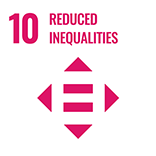




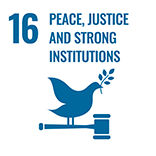
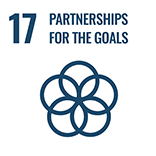


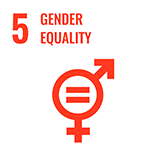
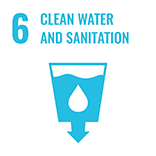

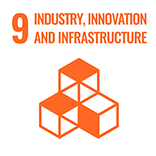
(0) Comments
There is no content